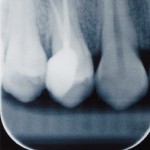
Gutta-percha introduced in the 1860s is the commonest root canal obturation material. It is most frequently placed using a cold lateral condensation technique. Contemporary practice uses thermoplasticised techniques, such as warm vertical condensation and core-carrier obturation which improve canal adaptation. With recent surveys suggesting that core-carrier obturation is the second most common method used by general dentists in the USA.
The aim of this review was to evaluate clinical success rate, short-term postoperative pain, overfilling and adaptation of the obturation material using core- carrier obturation techniques in endodontic treatment.
Methods
Searches were conducted in the Medline, Embase, Science Direct, Scopus and Web of Science databases. Studies reporting core-carrier obturation alone or by comparison with other obturation methods were considered. Two reviewers independently screened the studies, abstracted studies and assessed risk of bias. Data pooling an meta-analysis was conducted.
The treatment success in this review was defined as both clinical success and radiographic success. The clinical success was the treated tooth without symptoms of tenderness towards percussion, pain sensation, abscess and any endodontic-related symptoms. Radiographic success was resulted from absence of periapical radiolucency in intraoral radiographs.
Results
- 19 studies were included.
- Only 2 studies were considered to be at low risk of bias.
- Pooled proportion of treatment success, incidence of short-term postoperative pain, overfilling and obturation quality are shown in table below.
| No. of Studies | Proportion (95%CI) | |
| Treatments success rate | 10 | 83 (69-91) |
| Incidence pain (1-day) | 4 | 35 (15-62) |
| Incidence pain (7-day) | 4 | 6 (1-35) |
| Overfilling | 10 | 31 (18-50) |
| Obturation quality | 6 | 85 (75-91) |
- No significant differences were seen between core-carrier obturation and cold lateral condensation
| No. of Studies | Relative risk (95%CI) | |
| Treatments success rate | 6 | 1.01 (0.96-1.05) |
| Incidence pain (1-day) | 4 | 1.64 (0.53-5.10) |
| Incidence pain (7-day) | 1 | 0.87 (0.40-1.86) |
| Overfilling | 5 | 1.31 (0.49-3.46) |
| Obturation quality | 3 | 1.11 (0.86-1.43) |
Conclusions
The authors concluded: –
The success rate of endodontic treatment using core-carrier obturation was 83%. Short-term postoperative pain was not uncommon (24%). Most teeth (85%) had adequate adaptation using core-carrier obturation material, but a considerable number of teeth (31%) had overfilling.
Comments
This review has employed a broad search strategy and included 19 studies. Unfortunately, little information is provided about the type of study designs included so it is difficult to assess study quality. While the authors have used the Cochrane risk of bias (CRoB) tool this is only really appropriate for randomised controlled trials (RCTs) and while the CRoB suggest that 6 studies were randomised there is no other confirmation of this. So while this review provides an indicative summary of outcomes following core- carrier obturation and evidence to suggest that there is no difference between core-carrier obturation and cold lateral condensation the findings should be viewed cautiously.
Links
Primary Paper
Wong AW, Zhang S, Li SK, Zhang C, Chu CH. Clinical studies on core-carrier obturation: a systematic review and meta-analysis. BMC Oral Health. 2017 Dec 29;17(1):167. doi: 10.1186/s12903-017-0459-1. PubMed PMID: 29284463; PubMed Central PMCID: PMC5747112.
Other references
Dental Elf – 17th Jun 2016

Res Sir,
This article gives a true message about suitability of core carrier technique.
I always look at this treatment to be a more mechanical one, as being a hardcore Mechanical Engineer, i personally believe the success of the treatment to depend largely on pre-preparations and the clinical managements after treatment.